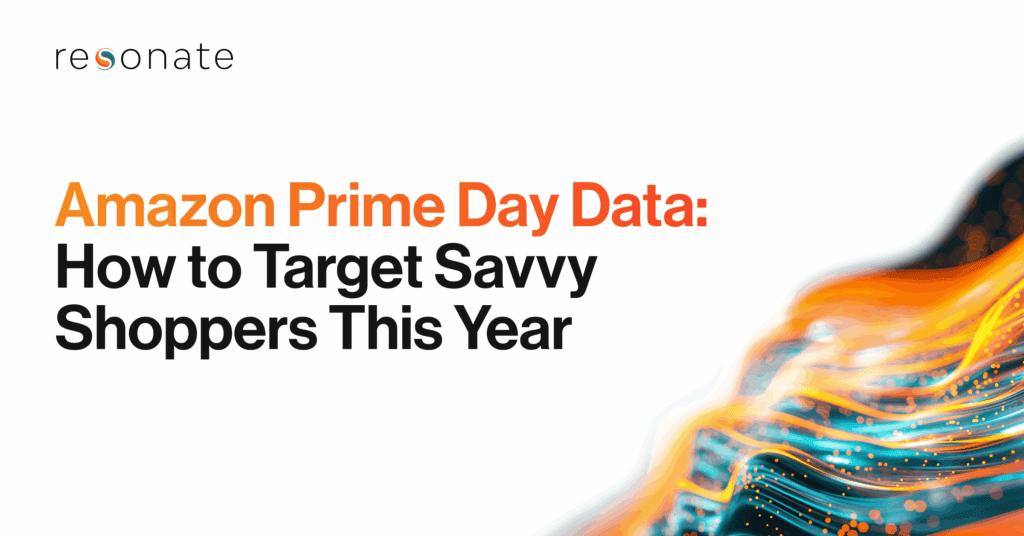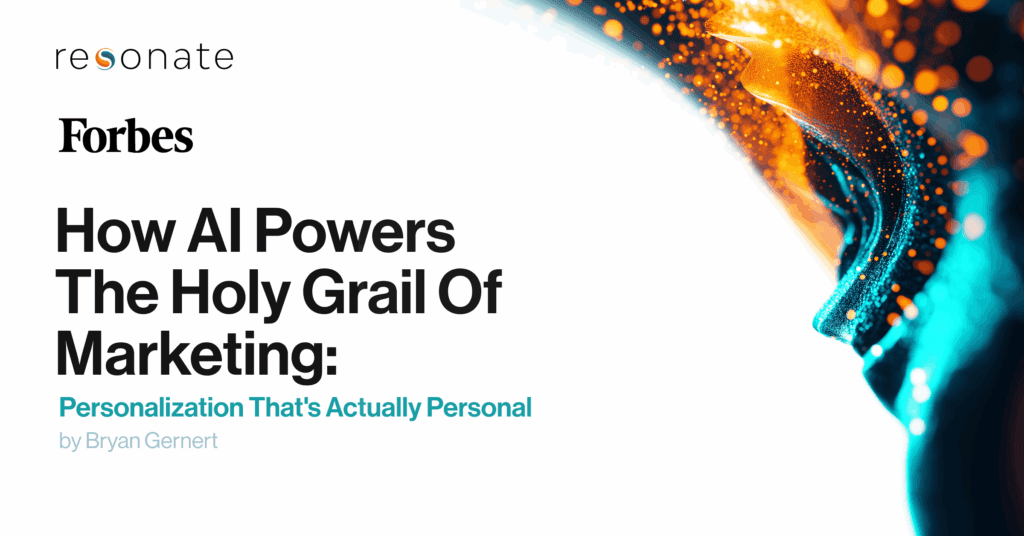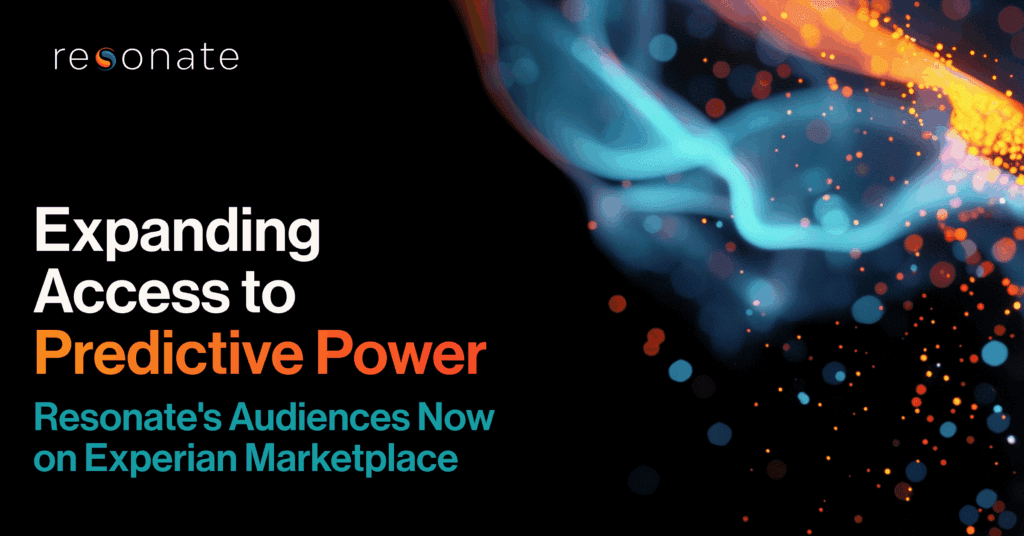“There are only two ways to make money in business: you can unbundle, or you can bundle.” — Jim Barksdale
Deloitte predicts that at least 150 million SVOD (Subscription Video on Demand) services will be canceled globally next year. In the US, they say churn has already reached 35%.
What does this mean for your media and entertainment company?
It’s not all bad news. Deloitte also forecasts that more subscriptions will be added than canceled, increasing the overall average number of subscriptions per person in the same report opening a new opportunity for partnerships through bundling.
So, today, we’ll walk you through what some trendsetting media giants are already doing to prevent more churn with data-driven cross-channel bundling.
Before we start, here is a friendly reminder that media bundling isn’t limited to television. If a monthly or annual subscription is charged, you can bundle. This means optimized personalization to streamline lifestyle functionality and reduce friction for the end-user. Now let’s dive deeper into what we know before looking at some expected and unexpected bundled services.
Cross-Channel Bundling: Phone Carriers x Streaming Services
A tale as old as time, media bundling has been around for decades. We saw cable providers do it back in the 80s, long before the first TV streaming boom. Today, more and more major video publishers have their own subscription-based streaming platform, often with unique content. But this phenomenon isn’t without its caveats, like many cord-cutters now paying nearly as much as cable to multiple providers. Between price hikes and even more streaming options, some expect yet another shift in overwhelmed subscribers.
One of the most understated bundling strategies of the year came from phone carriers. While we were all busy watching out for new subscriptions (looking at you, Paramount+), many of our phone plans picked up a streaming channel or two. But which ones were actually relevant to the end-users?
At Resonate, we like to look at these trends through the lens of the consumer. Let’s do a little deep dive into 2 popular phone carrier streaming bundles of 2021 to learn how these offerings align with customers’ personal values. Get the streaming party started!
HBO Max on AT&T plans
AT&T, which owns HBO Max, bundles in the ad-free version of the WarnerMedia streaming service with several of its wireless, TV, and home internet plans. Here’s a look at the top personal values of AT&T subscribers.
Top Values of AT&T Customers
Life Full of Excitement, Novelties, & Challenges
Being in Charge and Directing People
Maintaining a Good Public Image
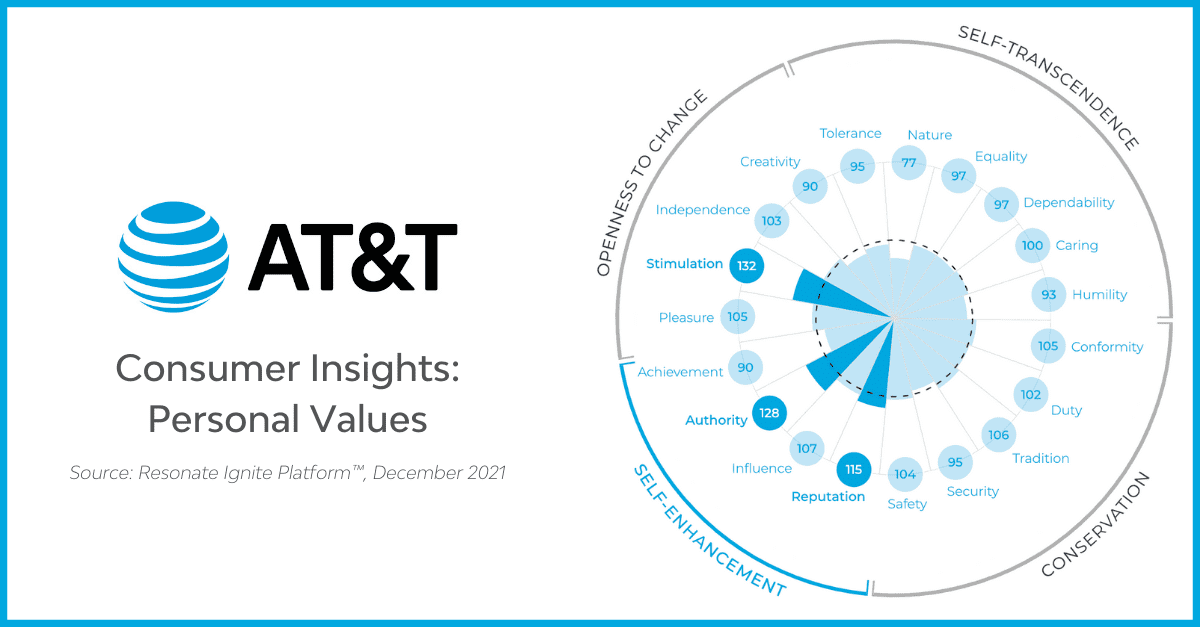
Top Values of HBO Max Customers
Acquiring Wealth and Influence
Life Full of Excitement, Novelties, & Challenges
Show Abilities and Be Admired
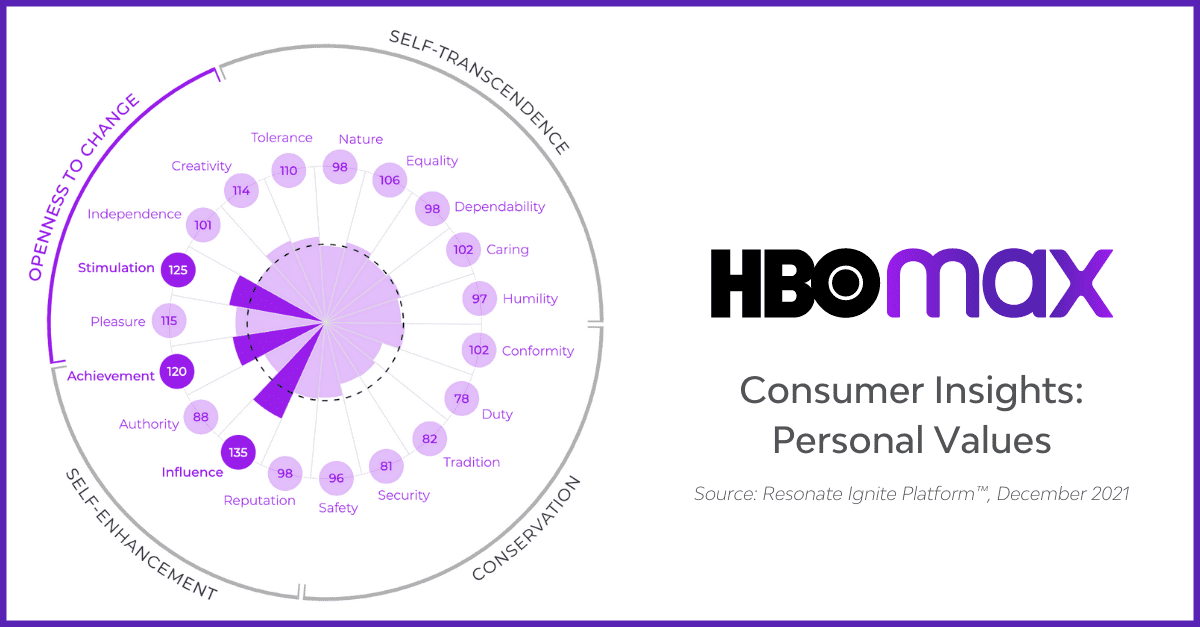
Now, how do the values of AT&T customers stack up against the value of HBO Max customers? Survey (and our AI-driven analytics) says: their values are very aligned. Like AT&T customers, HBO Max viewers value acquiring wealth and social status—they like winning. Both also seek adventure and novel, stimulating experiences.
What makes this media bundle work?
Let’s add a bit more context here—especially given the pandemic-driven changes. If you can recount the blur that was 2021, you may remember that Warner Bros. released all its movies simultaneously in theaters and on HBO Max this year. For an audience who values novelty and social status (if you’re not the first to watch a movie, you’re last) but has been limited by circumstance, this play makes sense. So, it’s no surprise to see that Universal worked out a similar deal with AMC, as did Disney with Paramount.
INTERESTING NOTE: In September, we saw HBO and HBO Max lose almost 2 million US subscribers due to removing subscription deals with Amazon Prime — further proof that these viewers see value in media bundling. Another interesting trend we’ll be keeping an eye on is one of the ways WarnerMedia offset the loss and ultimately increase global subscriptions: ad-supported streaming plans. More on that to come!
Netflix on Us by T-Mobile
Through its Netflix on Us perk, T-Mobile has long offered free Netflix on some of its unlimited plans, including Magenta, Magenta Plus, and its new Magenta Max option. Older plans also have Netflix included, though exactly which version of Netflix will vary.
Top Values of T-Mobile Customers
Show Abilities and Be Admired
Maintaining a Good Public Image
Being in Charge and Directing People
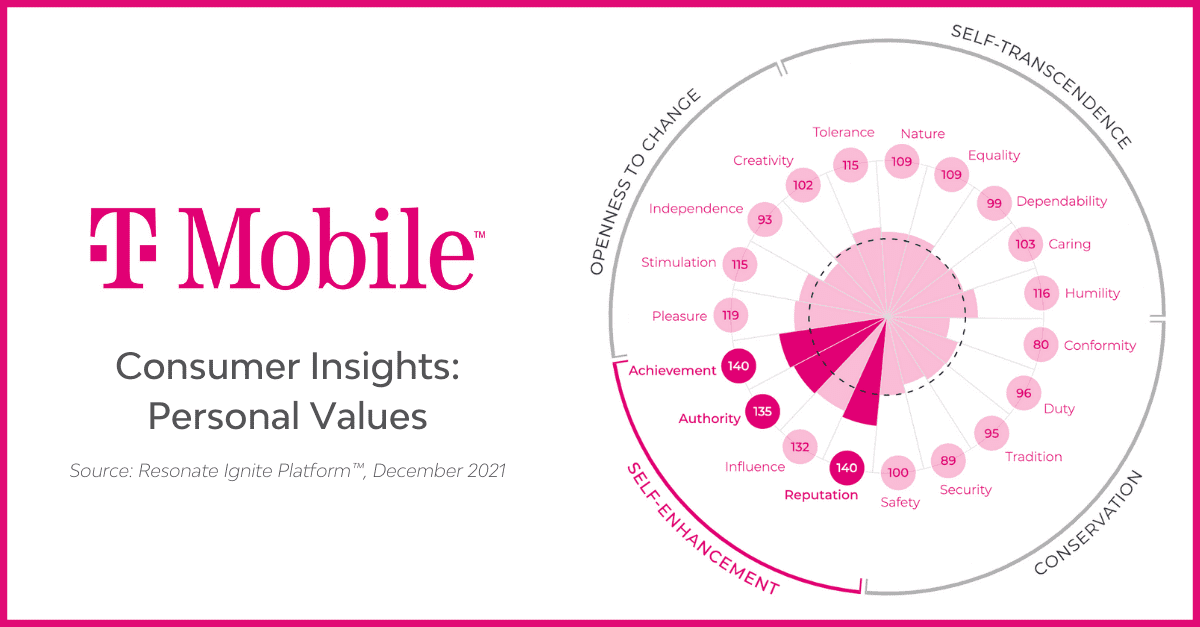
Top Values of Netflix Customers
Life Full of Excitement, Novelties, & Challenges
Freedom to be Creative
Enjoying Life’s Pleasures
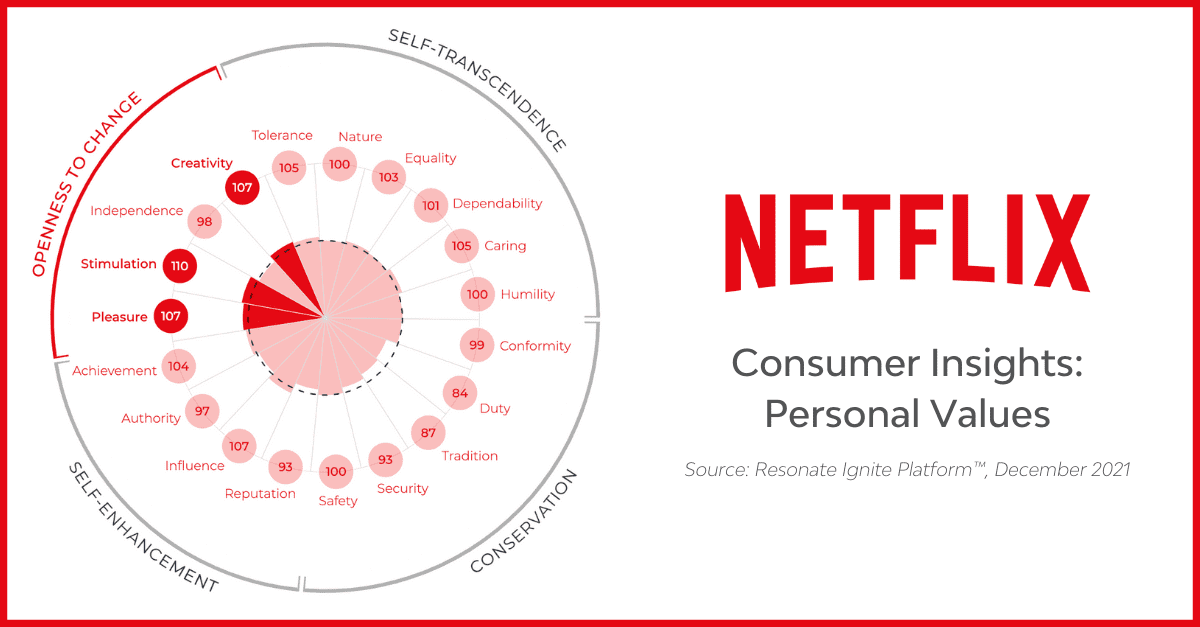
So, how do the values of T-Mobile customers and those of Netflix viewers match up to each other? One could say that they’re night and day. T-Mobile customers are the only audience whose top three values don’t include living a life of novelty or excitement; they skew almost entirely towards self-enhancement values. On the other hand, Netflix subscribers skew entirely towards an openness to change, creativity, imagination, and fun.
What makes this media bundle work?
Since this mashup is NOT new, and the media landscape has changed so much in the last couple of years, we’re going to need some historical context. If you remember that far back, the un-carrier was one of the first to introduce cross-bundling between streaming subscriptions and phone plans back in 2017 — and they did it with the biggest disruptor at the time, Netflix. At the time, T-Mobile was catering to a new consumer, one who used their phone primarily for streaming. Being the first awards you the ability to reach audiences that don’t necessarily align with the traditional values associated with your customers!
Media companies should be tracking consumer sentiment
As consumers deal with a flood of streaming services, (re)bundling presents itself as an obvious solution. Still, we don’t know which company will be the first to offer a batch of subscription products for a discounted price—similar to traditional pay-tv. From a media advertising perspective, the answer is an important one. The content aggregator is the consumer’s direct point of commerce, which comes with the perk of consumption data. In the digital age, that’s the ideal position when advertisers follow spending habits.
I said it before, but it bears repeating: media bundling doesn’t need to be restricted to just TV. This gives content aggregators the ability to personalize offerings like never before, mixing and matching tv, news, e-commerce, gaming, and any other service that charges a monthly or annual subscription rate. The possibilities are endless, but time—and consumers—will tell which out-of-the-box bundles work. We’ll be keeping up with the trends either way.

